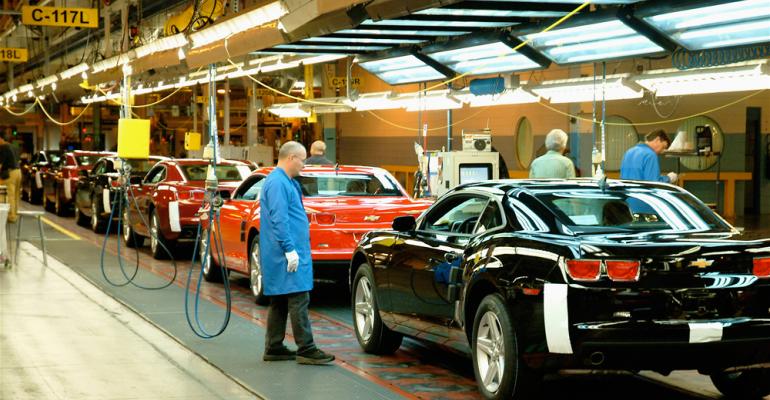The Canadian Auto Workers union takes a plan for strengthening its industry to the country’s three leading political parties today, including an appeal for lawmakers to remind General Motors of the role Canada played in saving the Detroit auto maker.
Ken Lewenza, national president of the CAW, says the union went to Parliament in Ottawa to “advocate for the adoption of a strong automotive investment strategy, emphasizing good, value-added jobs,” and also to point out recent job losses.
Lewenza’s and his lieutenants’ meeting with representatives from the New Democratic, Liberal and sitting Conservative parties occurs just days after GM decides to go forward with plans to cease production on an assembly line in Oshawa, ON, putting upwards of 2,000 jobs at stake.
The decision, which GM first scheduled in 2005 but held off due to the popularity of the product built on Oshawa’s consolidated assembly line, angers Lewenza because in 2009 the federal and Ontario governments committed $10 billion to help the auto maker restructure in bankruptcy.
The Canadian governments now hold a combined 9.0% of GM’s outstanding stock. The U.S. government owns 32% and individual and institutional investors have 44.9%. GM’s pension fund and a United Auto Workers union retiree-benefit unit hold the remainder.
Canadian lawmakers “should be reminding General Motors in the very strongest terms possible that to abandon Oshawa is a betrayal of that commitment,” Lewenza says.
GM appears to have rebounded strongly from its bankruptcy, booking a record $7.6 billion profit in 2011.
Lewenza tells WardsAuto in a telephone interview from Ottawa that federal lawmakers should take a more active approach to securing new auto industry investment from multinational companies such as GM, using a national auto policy to lure future production commitments with the same incentives used by the U.S. and other countries.
“The (Canadian) government cannot allow the market to dictate jobs,” he says. “They need to use the carrot and the stick. The carrot would be support for the industry and the stick would be keeping a certain amount of production in Canada.”
Lewenza says the auto industry, which at $53 billion annually ranks second only to oil and gas in terms of export dollars when it comes to Canada’s economy, loses relevancy outside the manufacturing hub of Ontario.
“We needed to emphasize ( to lawmakers) the importance of it beyond Ontario,” he says.
In addition to GM, Chrysler, Ford, Toyota and Honda operate major manufacturing sites in Canada that directly employ 112,000 workers, pumping $6.1 billion into the economy last year. Six other manufacturers produce buses and heavy trucks in the country.
But decades of restructuring by the Detroit Three has shrunk Canada’s vehicle producing muscle.
Canada ranks 11th in global vehicle production, including heavy-duty models, with 2.2 million units built in 2011, according to WardsAuto data. The country ranked as high as No.5 in the world in 1994 with 2.4 million units of production.
Today, China leads with 18.4 million vehicles produced last year, followed by the U.S. at 8.7 million and Japan at 8.4 million.
Lewenza says in addition to a national auto policy and more active negotiations by the government to gain manufacturing commitments from OEMs, Canada needs a consistent and transparent automotive investment program.
The CAW also asks lawmakers to consider public minority stakes in OEMs; investigation into building a state-owned car company; rethinking automotive trade policy; deflating the Canadian dollar; developing a greener auto industry; establishing a “buy Canadian” procurement strategy; and investing in workforce and infrastructure.





